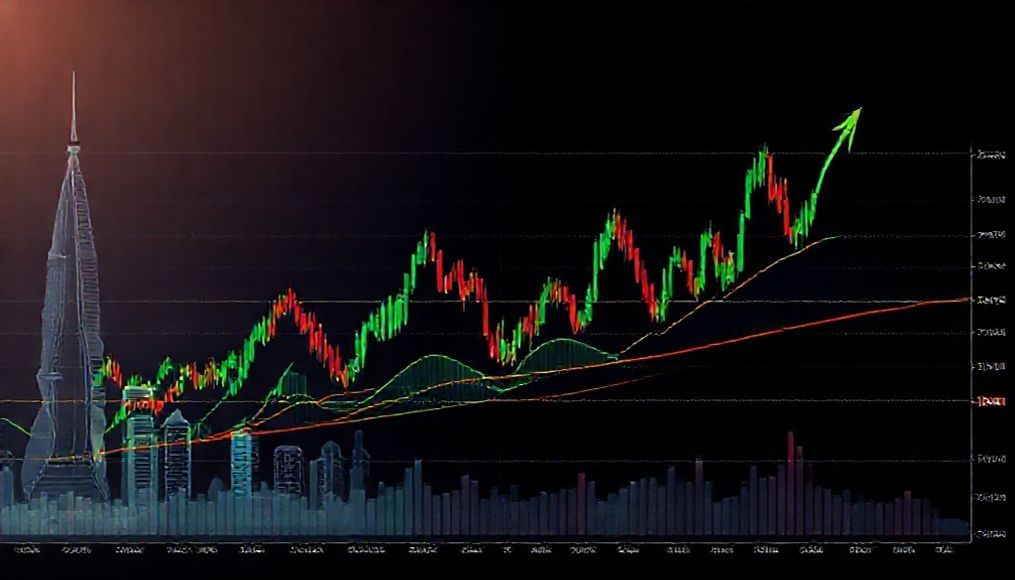Introduction to Advanced Moving Average Trading Strategies
Moving averages are fundamental technical analysis tools used to identify price trends and smooth out market fluctuations. While many traders rely on simple strategies based on moving average crossovers, there are several advanced strategies that can provide more accurate signals and opportunities for greater profits. This article aims to explore these advanced strategies and equip traders with the tools and knowledge necessary to apply them successfully.
Chapter 1: Understanding the Basics of Moving Averages
What are Moving Averages?
A moving average is a technical indicator that calculates the average price of a financial asset over a specified period. There are different types of moving averages, including:
- Simple Moving Average (SMA): Calculates the average price by summing the closing prices over the specified period and dividing by the number of periods.
- Exponential Moving Average (EMA): Gives more weight to recent prices, making it more responsive to recent price changes.
- Weighted Moving Average (WMA): Assigns different weights to prices based on their importance, allowing for greater customization of the indicator.
How to Use Moving Averages to Identify Trends
Moving averages are primarily used to identify price trends. When the price is above the moving average, the trend is considered to be upward. When the price is below the moving average, the trend is considered to be downward. Moving averages can also be used to identify potential support and resistance levels.
Chapter 2: Double Moving Average Crossover Strategy
Explanation of the Strategy
This strategy relies on using two moving averages with different time periods. Typically, a short-term moving average (such as 20 days) and a long-term moving average (such as 50 days) are used. When the short-term moving average crosses above the long-term moving average, it is considered a buy signal. When the short-term moving average crosses below the long-term moving average, it is considered a sell signal.
Practical Example
Let's assume we are using a 20-day simple moving average and a 50-day simple moving average on Saudi Aramco stock. If the 20-day moving average rises above the 50-day moving average, this is a buy signal. If the 20-day moving average falls below the 50-day moving average, this is a sell signal.
Chapter 3: Triple Moving Average Crossover Strategy
Explanation of the Strategy
This strategy is an extension of the double moving average crossover strategy, but it uses three moving averages with different time periods. For example, a short-term moving average (such as 10 days), a medium-term moving average (such as 20 days), and a long-term moving average (such as 50 days) can be used. The signal is considered stronger when all moving averages cross in the same direction.
Practical Example
Using the same example as before, if the 10-day moving average rises above the 20-day moving average, and the 20-day moving average rises above the 50-day moving average, this is a strong buy signal. The opposite is true for a sell signal.
Chapter 4: Using Moving Averages as Dynamic Support and Resistance
Explanation of the Strategy
Moving averages can be used as dynamic support and resistance lines. In an uptrend, the moving average often acts as support, where the price bounces off it. In a downtrend, the moving average often acts as resistance, where the price falls at it. Traders can use these levels to identify potential entry and exit points.
Practical Example
If SABIC stock is in an uptrend, traders may find that the 50-day moving average acts as support. They can buy the stock when the price approaches this level. Conversely, if the stock is in a downtrend, traders may find that the 50-day moving average acts as resistance. They can sell the stock when the price approaches this level.
Chapter 5: Combining Moving Averages with Other Technical Indicators
Relative Strength Index (RSI)
Moving averages can be combined with the Relative Strength Index (RSI) to confirm signals. For example, if the moving average indicates an upward trend and the RSI indicates that the financial asset is not in the overbought zone, it may be a strong buy signal.
MACD Indicator
Moving averages can also be combined with the MACD indicator. If the moving average indicates an upward trend and the MACD indicates a bullish crossover, it may be a strong buy signal.
Chapter 6: Using Moving Averages in Volatile Markets
Adjusting Moving Average Periods
In volatile markets, it may be necessary to adjust the moving average periods to make them more responsive to price fluctuations. Traders can experiment with shorter time periods for moving averages to get faster signals.
Using Exponential Moving Averages
Exponential moving averages are often more effective in volatile markets because they give more weight to recent prices, making them more responsive to rapid price changes.
Chapter 7: Exit Strategies Using Moving Averages
Using Moving Averages as a Trailing Stop Loss
Moving averages can be used as a trailing stop loss to protect profits. For example, a trader can place a stop loss below the 50-day moving average in an uptrend. As the price rises, the stop loss rises with it, ensuring that profits are realized in the event of a trend reversal.
Using Moving Average Crossovers for Exits
Moving average crossovers can also be used to exit trades. For example, if a trader is in a buy trade and a bearish crossover occurs between the moving averages, it may be a signal to exit the trade.
Chapter 8: Risk Management in Moving Average Trading
Determining the Appropriate Position Size
It is important to determine the appropriate position size for each trade based on risk tolerance. A trader should not risk more than a small percentage of their capital on any single trade.
Using Stop-Loss Orders
Stop-loss orders should be used to protect capital in the event of a trend reversal. Stop-loss orders should be placed at a reasonable level based on market volatility.
Chapter 9: Practical Examples from the Saudi Market
Applying Strategies to Saudi Company Stocks
The strategies mentioned above can be applied to the stocks of Saudi companies listed on Tadawul. For example, traders can use the double moving average crossover strategy to trade shares of Al Rajhi Bank or SABIC.
Analyzing the Performance of the General Index Using Moving Averages
Moving averages can also be used to analyze the performance of the Saudi Stock Exchange (TASI) general index. Traders can use moving averages to identify the market trend and identify potential support and resistance levels.
Chapter 10: Advanced Tips for Professional Traders
Algorithmic Trading Using Moving Averages
Professional traders can use algorithmic trading to automate moving average trading strategies. Algorithms can be programmed to identify buy and sell signals and execute trades automatically.
Cumulative Analysis of Moving Averages
Cumulative analysis involves using a variety of moving averages with different time periods to analyze trends more comprehensively. Traders can use this analysis to identify potential entry and exit points more accurately.
Conclusion
Mastering advanced moving average trading strategies requires practice and patience. By understanding the basics of moving averages and applying the strategies mentioned in this article, traders can improve their performance and increase their chances of achieving sustainable profits in the financial markets.



